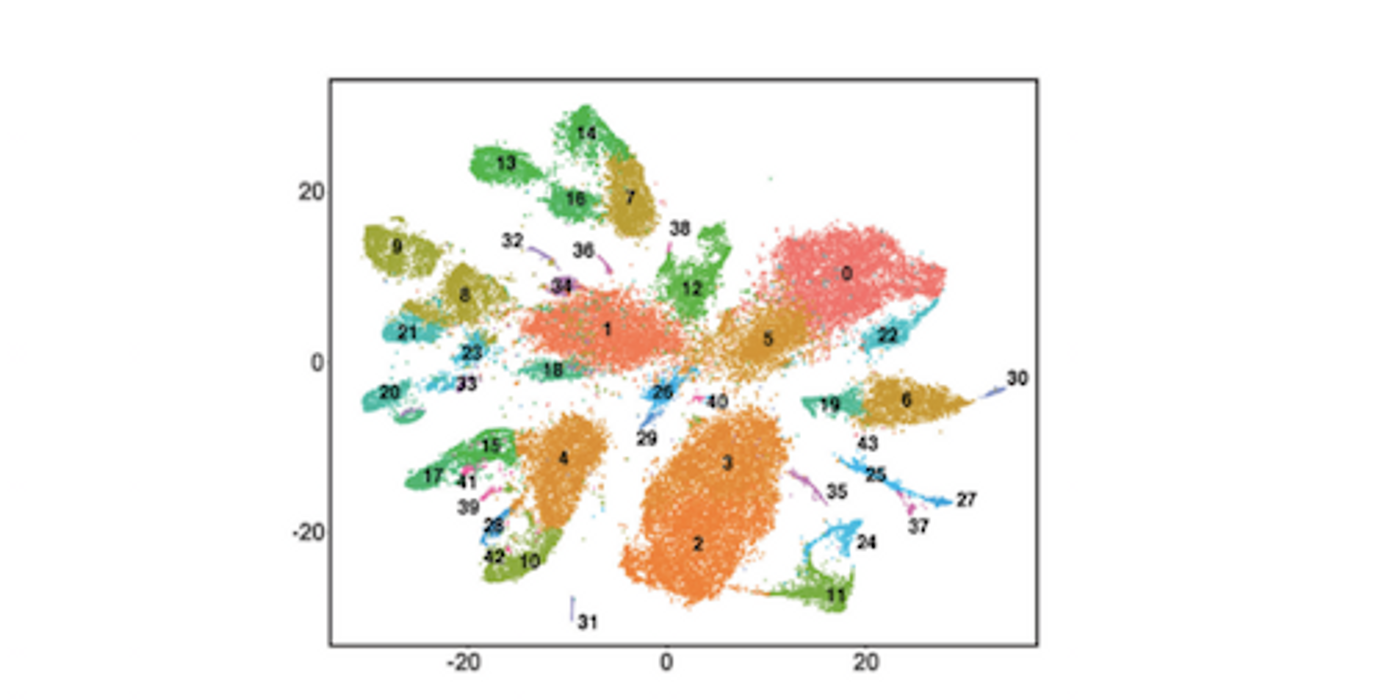An Atlas of Gene Activity in Each Cell of a Whole Animal
Modern technology has enabled researchers to assess the activity of genes in individual cells. Now, using a worm called Schmidtea mediterranea, scientists at Whitehead Institute and MIT have cataloged the transcriptome, or which genes are being expressed, in every cell of that regenerative planarian flatworm, around 65,000 cells in all. They used the data to create a transcriptome atlas of the organism, which has the special ability to regenerate limbs.
“We’re really at the beginning of an amazing era. Just as genome sequences became indispensable resources for studying the biology of countless organisms, analyzing the transcriptomes of every cell type will become another fundamental tool — not just for planarians, but for many different organisms,” said Peter Reddien, a member of Whitehead Institute. He was senior author of a report about the new atlas, published in Science; he is also a professor of biology at MIT, and an investigator with the Howard Hughes Medical Institute.
Only about two percent of our genome codes for proteins that function. That coding DNA is transcribed into RNA before being translated into proteins, so researchers usually focus on the RNA in cells to see what genes are active. But there is very little RNA in only one cell, and it was once unthinkable that scientists could see what was happening at that level. But things have changed, and single-cell RNA sequencing is now a reality; not only that but the costs have been reduced. Now that technology has been applied to an entire organism.
In the early days of this technology, Reddien knew it had real potential in planarian biology. “Planarians are relatively simple, so it would be theoretically possible for us to capture every cell type. Yet they still have a sufficiently large number of cells — including types we know little or even nothing about,” he explained. “And because of the unusual aspects of planarian biology — essentially, adults maintain developmental information and progenitor cells that in other organisms might be present transiently only in embryos — we could capture information about mature cells, progenitor cells, and information guiding cell decisions by sampling just one stage, the adult.” He gives a lecture about planaria as a model in regenerative medicine in the video.
After isolating single cells from five different regions of planarians, Reddien and a team led by first author Christopher Fincher looked at the trascriptomes of over 66,000 cells. That included exceedingly rare cell types of which there are only ten out of 500,000. They also found cells that have not yet been characterized.
"We identified many cells that were present widely throughout the animal, but had not been previously identified. This surprising finding highlights the great value of this approach in identifying new cells, a method that could be applied widely to many understudied organisms," Fincher said.
“One main important aspect of our transcriptome atlas is its utility for the scientific community,” Reddien added. “Because many of the cell types present in planarians emerged long ago in evolution, similar cells still exist today in various organisms across the planet. That means these cell types and the genes active within them can be studied using this resource.”
“There are an unlimited number of directions that can now be taken with these data,” Reddien said. “We plan to extend our initial work, using further single-cell analyses, and also to mine the transcriptome atlas for addressing important questions in regenerative biology. We hope many other investigators find this to be a very valuable resource, too.”









